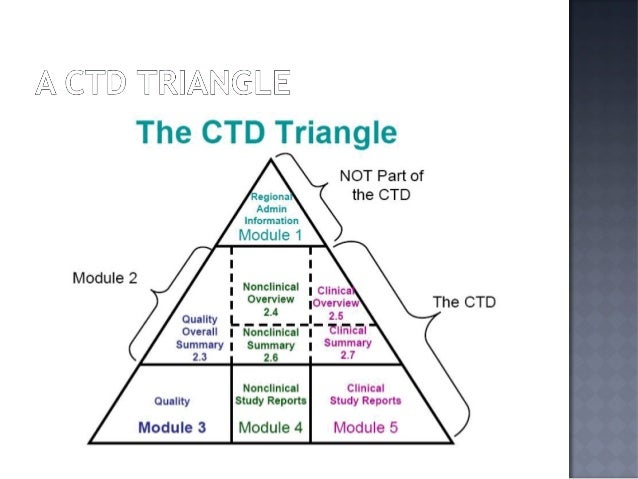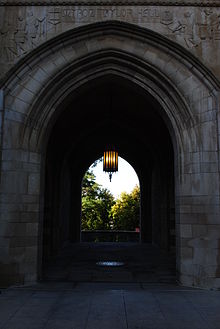| Tompkins County, New York |

Seal |
|

Location in the state of New York |

New York’s location in the U.S. |
LEARN A CASE STUDY WITH DR ANTHONY, SO EASY TO UNDERSTAND 35 U.S.C. § 112
 ME
ME
case study on this
The Attack of 35 U.S.C. § 112
http://www.google.com/patents/US8598219
September 2, 2014, Accord Healthcare, Inc. (“Accord”) filed what appears to be the second-ever Post-Grant Review (“PGR”) (see Petition). This PGR was for U.S. Patent No. 8,598,219 (“the ‘219 Patent”), which is jointly assigned to Helsinn Healthcare S.A. and Roche Palo Alto, LLC (collectively “Helsinn”).
Helsinn Healthcare Sa, Roche Palo Alto Llc
As a reminder, PGRs are the third type of post-issuance review procedures established by the America Invents Act (“AIA”) — the other two being Inter Partes Review and Covered Business Method Patent Review (IPR and CBM, for short). However, the reason that only one other PGR has been filed to date is because this type of proceeding only applies to patents that were examined pursuant to the new First Inventor to File scheme established by the AIA.
And because such applications could only be filed on or after March 16, 2013, there are only a limited number of such patents that are presently eligible for PGR. One of the other significant differences between IPRs and PGRs is that the latter is not limited to certain types of prior art validity attacks (such as 102 or 103), but instead any type of validity challenge available in District Court is essentially available in front of the Patent Trial and Appeals Board (“PTAB”).
This includes attacks under 35 U.S.C. § 112, such as allegations of a lack of enablement, a lack of written description, and a failure to distinctly claim the invention. Accord took full advantage of this in its petition for PGR2014-00010, in which Accord alleged that Helsinn’s patent related to liquid pharmaceutical formulations of palonosetron should not have been issued by the Patent Office.

The ‘219 patent had been asserted in several Hatch-Waxman litigations involving ALOXI®, which is a palonosetron formulation indicated to help prevent nausea and vomiting following chemotherapy. Palonosetron hydrochloride, the active pharmaceutical ingredient, has the following structural formula:

The ‘219 patent is a member of a family of patents directed to formulations of palonosetron hydrochloride. Importantly, this patent was filed as a continuation-in-part application on May 23, 2013, with a letter that asserted that claim 9 only had support because of a newly added example, and therefore was subject to the AIA. Only claims 1-5 and 8 of the ‘219 patent are the subject of this petition, with claim 1 reading:
1. A pharmaceutical single-use, unit-dose formulation for intravenous administration to a human to reduce the likelihood of cancer chemotherapy-induced nausea and vomiting, comprising a 5 mL sterile aqueous isotonic solution, said solution comprising:
palonosetron hydrochloride in an amount of 0.25 mg based on the weight of its free base;
from 0.005 mg/mL to 1.0 mg/mL EDTA;
and from 10 mg/mL to 80 mg/mL mannitol,
wherein said formulation is stable at 24 months when stored at room temperature.
Claim 8 is the only other challenged independent claim, and it reads identically, except for a stability limitation of 18 months when stored at room temperature. This patent issued on December 3, 2013, and the PGR petition was filed within the requisite nine months.
What is claimed is:
1. A pharmaceutical single-use, unit-dose formulation for intravenous administration to a human to reduce the likelihood of cancer chemotherapy-induced nausea and vomiting, comprising a 5 mL sterile aqueous isotonic solution, said solution comprising:
palonosetron hydrochloride in an amount of 0.25 mg based on the weight of its free base;
from 0.005 mg/mL to 1.0 mg/mL EDTA; and
from 10 mg/mL to 80 mg/mL mannitol,
wherein said formulation is stable at 24 months when stored at room temperature.
2. The pharmaceutical formulation of claim 1, wherein said EDTA is in an amount of 0.5 mg/mL.
3. The pharmaceutical formulation of claim 1, wherein said mannitol is in an amount of 41.5 mg/mL.
4. The pharmaceutical formulation of claim 1, wherein said solution further comprises a citrate buffer.
5. The pharmaceutical formulation of claim 4, wherein said citrate buffer is at a concentration of 20 millimolar.
6. The pharmaceutical formulation of claim 1, wherein said solution is buffered at a pH of 5.0 ±0.5.
7. The pharmaceutical formulation of claim 1, wherein said EDTA is in an amount of 0.5 mg/mL, wherein said mannitol is in an amount of 41.5 mg/mL, wherein said solution further comprises a citrate buffer at a concentration of 20 millimolar, and wherein said solution is buffered at a pH of 5.0 ±0.5.
8. A pharmaceutical single-use, unit-dose formulation for intravenous administration to a human to reduce the likelihood of cancer chemotherapy-induced nausea and vomiting, comprising a 5 mL sterile aqueous isotonic solution, said solution comprising:
palonosetron hydrochloride in an amount of 0.25 mg based on the weight of its free base;
from 0.005 mg/mL to 1.0 mg/mL EDTA; and
from 10 mg/mL to 80 mg/mL mannitol, wherein said formulation is stable at 18 months when stored at room temperature.
SO EASY TO UNDERSTAND 35 U.S.C. § 112
The petition pointed out that during the prosecution of the ‘219 patent and its family, the Patent Office had rejected the claimed formulations as obvious. In response, the applicants submitted a declaration from inventor Daniele Bonadeo (“the Bonadeo declaration”) and argued that one of skill in the art would not have combined the features of the invention as a matter of routine optimization. Instead of routine, the applicants continued, the claimed formulations were obtained after a sequence of experiments, each of which built upon the others like building blocks.
If the experimental sequence had varied, the applicants alleged that they would have obtained a different formulation. The Bonadeo declaration explained that the first two parameters studied were palonosetron concentration and pH. None of the studies described in this declaration, however, occurred at a pH other than 5.0, which makes sense because palonosetron was described as extremely stable at this pH.
Considering that the ‘219 patent ultimately issued, the applicants were apparently successful in overcoming these obviousness rejections. In other words, the applicants convinced the examiner that a person of ordinary skill in the art would not have found it obvious to combine the teachings in the prior art to derived the claimed inventions.
The positions taken by the applicant, however, were utilized by the petitioner, Accord, to allege that a person of ordinary skill in the art would not have, for example, found the specification enabling. This highlights the problem that PGRs pose for patent applicants. Before such procedure, arguments could be made without much fear that they would be coopted by the Office for making alternative rejections. And, if the Office did, there would still an opportunity to provide a response or amend the claims. Even if such arguments were made in district court litigation, the patent would at least enjoy a presumption of validity.
Now, all applicants must take extreme caution in making any arguments, because anything said can (and probably will) be used against them at the PTAB.
What follows is an identification of the 35 U.S.C. § 112 arguments made by Accord. Considering that the patent owner has not yet filed any response, and the PTAB has not weighed in, no position is taken here as to the merits of these arguments.
Written Description – Stability
Accord first alleged that the ‘219 was unpatentable for failing to provide an adequate description of the claimed subject matter being stable at 18 or 24 months when stored at room temperature, as required by 35 U.S.C. § 112(a). Specifically, the petition asserted that the specification does not show that the inventors were in possession of any formulation that would have achieved the stability limitations of the claims.
Instead, the argument went, the patent contained general statements that it is possible to increase the stability of the formulations, but did not provide any examples with stability beyond a couple of weeks. Accord included a declaration from Dr. Arnold J. Repta, which explained how a person of ordinary skill in the art would have understood the teaching of the specification. However, Dr. Repta did not include any additional testing of the formulations taught in the application in his declaration.
Enablement
The second assertion made in the petition was that the ‘219 patent does not enable a pH range for the claimed formation outside of about 4.0 to 6.0, and therefore it is not enabled as required by 35 U.S.C. § 112(a). This is because, according the petition, the only relevant formulation in the specification was disclosed as having a pH of 5.0±0.5. Moreover, the specification was alleged to claim that palonosetron is most stable at pH 5.0.
Accord also cited to the Bonadeo Declaration, which was submitted during prosecution by the applicants, which alleged claimed that palonosetron formulations containing mannitol or EDTA required a pH of 4-6. Therefore, according to the petition, because the challenged claims do not recite any pH limitations, they were broader than the teaching of the specification.
“Regards as the Invention”
35 U.S.C § 112(b) requires that a patent “conclude with one or more claims particularly pointing out and distinctly claiming the subject matter which the inventor or a joint inventor regards as the invention.” Accord challenged the claims of the ‘219 patent as not including the invention as regarded by the inventors. Specifically, the petition alleges that the Bonadeo Declaration made clear that palonosetron was extremely stable at a pH of 5.0, and that there was no hint that a pH outside of the range of about 4.0 or 6.0 would be suitable. A similar argument was made about the language found in the specification. The petitioner concluded by pointing out that, even though the inventors believed that the inventive formation should be in a range of 4.0 to 6.0, such a limitation was not included in the claims.
Written Description – pH Range
Finally, Accord made a similar argument when alleging that the specification did not support claims that did not include a pH range of 4.0 to 6.0. Citing to the Gentry Gallery, Inc. v. Berkline Corp., 134 F.3d 1473 (Fed. Cir. 1998), line of cases, the petitioner alleged that the pH range was an essential or critical feature which was omitted from that claims. In other words, Accord alleged that the broad claims without a pH limitation were invalid because the “entirety of the specification” demonstrates that the invention was of much narrower scope.
Of course, similar to an IPR, the patent owner now has a chance to submit a preliminary response to the petition. The standard used for instituting a PGR differs from that required for an IPR. Instead of the “reasonable likelihood” standard, a PGR will only be instituted when it is more likely than not that at least one of the claims challenged is unpatentable. In essence, this should be a slightly more stringent standard, because with both positions being equally likely, an IPR petition would have a reasonable likelihood of demonstrating claims as unpatentable, but a PGR petition would not be more likely than not to demonstrate unpatentable claims.
However, it remains to be seen if less PGRs are instituted than IPRs. We will continue to monitor PGR2014-00010, and provide updates as warranted.
SO EASY TO UNDERSTAND 35 U.S.C. § 112


























 thanks to cornell
thanks to cornell Cornell law school
Cornell law school











 ME
ME